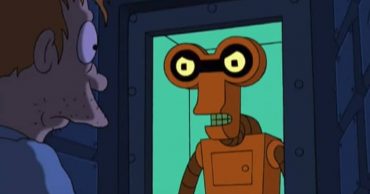
Angie Tribeca: A Love Letter to Slapstick Comedy
As a die-hard fan of Hot Shots and the original Naked Gun, I can confidently say that a show like Angie Tribeca is right up my alley. While it’s easy to appreciate Angie Tribeca‘s pilot episode for its seamless parody of police procedurals, there are moments where it feels like the show is grappling with its own length and style. The question remains: how much can Angie Tribeca truly extract from a well-worn, increasingly niche brand of comedy?
Slapstick Comedy’s Limitations in Long-Form
Written by Steve and Nancy Walls Carrell (and directed by Steve Carrell), “Pilot” serves as both a promising introduction to TNT’s first comedy in ages—unless you consider Franklin & Bash a ‘comedy’—and a reminder of how limited the well of slapstick comedy can be, particularly in long-form. From start to finish, “Pilot” follows the ever-familiar rhythms of the many late 1970s-early 1990s comedies it pays homage to; the absurd physical gags, the constant reality and fourth wall breaking, and the abundance of outlandish characters and moments don’t exactly offer the most original material. However, everyone from stars Rashida Jones and Hayes McArthur to the many guest stars the show ropes in (in “Pilot”, there’s Gary Cole, Lisa Kudrow, and Nancy Walls Carrell herself) are so game, it’s hard not to laugh when the show spirals into absolute stupidity.
There are a few genuinely great gags in the first episode, which follows Angie and her partner Jay Geils around as they hunt down someone trying to blackmail a tattooed, philandering mayor—the best of them when Steve Carrell’s camera wanders around an art class Angie’s trying to infiltrate. But there are moments, even in the best scenes, where Angie Tribeca feels unbalanced; where the show is willing to meander and let two characters riff on nonsense for extended periods of time, the great jokes and images of the art room scene (along with others, like the too-long chase sequence) are rapidly edited, undercutting a lot of the great humor contained in its smallest, most unique moments. When Angie is being broad and conventional with its parody, it feels like a lesser Sledge Hammer!—which is no insult, but Angie Tribeca isn’t a show that should lurk in the shadows of its predecessors.
Angie Tribeca’s Success Hinges on Its Jokes
It all comes down to the material; for Angie to work, it’s not going to be able to rely on character development or an engaging overarching plot for audience investment. For better or worse, Angie Tribeca is a show that will rise and fall with the quality of its jokes in any given episode; given this, the editing decisions the pilot makes make it a little worrisome Angie will be able to fill its potential in season two (which it has already garnered) before its premise begins to run out of steam. Of course, being a ridiculous, satirical comedy means Angie Tribeca can be a little more flexible than the cop shows it’s making fun of; it’s a show designed completely around the random humor it can generate from any given scene, offering it freedom to play with the form and setting in ways most traditional, straightforward cop shows (drama or comedy) really can’t do.
Can Angie Tribeca Keep the Laughs Coming?
That’s in the future, however; after one episode, Angie Tribeca certainly proves it has the comedic chops to generate laughs—the question is how long can the writers keep the creative energy flowing. The cast can certainly bring it, but I’m curious to see how far Angie Tribeca can take its premise and format over the next nine episodes, and whether it can find ways to craft its wonderful, superficial sense of humor with something truly unique, lest it be lost and quickly forgotten against the saturated landscape of modern television.
 Follow Us
Follow Us




Sledge Hammer! had decent plots, actual mysteries and character development. It was also a satire on violence with political humor throughout. This is more empty headed.